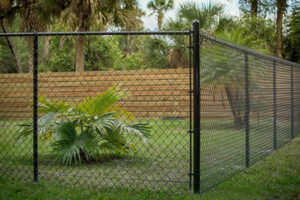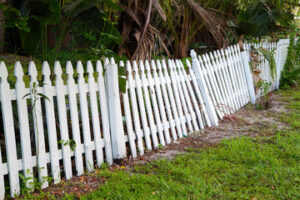Commercial Contractors OKC manage construction projects for business properties like offices, restaurants, and retail stores. They have extensive responsibilities that involve handling larger teams, a wider scope of work, and higher budgets than residential contractors.

Their responsibilities include working closely with architects and engineers to design projects that are both aesthetically pleasing and feasible for construction. They also perform detailed cost estimations and management to stay within budget.
The experience of commercial contractors is the key to getting quality work done on time and within budget. Commercial projects are more complex than residential ones, and they require more planning and coordination. Commercial builders know how to keep everyone on the team informed of the project status and timelines, and they have experience dealing with different types of materials and building codes. They also have a strong understanding of how to use heavy equipment and handle large quantities of material.
You can look for the experience of a contractor by checking how long they’ve been in business and looking at their portfolio. A good contractor will have a lengthy list of past clients with positive reviews, testimonials, and ratings. You can also find out more about their industry standing and education by reading their website.
Experienced commercial builders have a wide network of vendors and subcontractors and can offer you the best deals on materials and workmanship. They will be able to complete your construction project in the set timeline and budget, and they’ll stand by their work. They also have a lot of knowledge about local laws and regulations, including licensing and permit orders.
Another important consideration for commercial builders is safety. They should be committed to providing safe working conditions for their workers and have a safety program in place that will prevent on-site accidents. They should also provide a written warranty on their work.
You can get in touch with a reputable contractor by visiting their websites, calling them for a meeting, or asking around for recommendations. Many property management groups have lists of recommended commercial contractors, and you can also ask friends, family members, and other business associates for references. If possible, you can also visit properties that have been renovated recently and ask the owners about their commercial contractors. By evaluating their experience, you’ll be able to find the right one for your construction project. You should also ask about their safety record, as a safe job site is a crucial aspect of a successful construction project.
License
Commercial projects are more complicated than residential ones, and they require different materials, budgeting, timeframes, and codes. They also require the skills and experience of a licensed commercial contractor to ensure everything goes smoothly during construction, renovation, remodeling, or refurbishing.
Licensing requirements vary by state, but there are several general guidelines. In most states, contractors must pass a trade exam and a business law exam. The trade exam covers knowledge of a specific trade, and the business law exam covers important aspects of the industry like best practices, tax rules, and fair dealings with clients.
Once a person has passed the exam and met any other licensing requirements, they can start working on commercial projects. The license is valid for a specified period of time, and the holder must maintain insurance coverage to protect themselves from liability. They must also keep up with any changes to local, state, and federal laws and regulations.
Some states require a commercial license for all general contractors, while others only license them for certain types of projects or for specific trades. For example, in Alabama, all general contractors must be licensed if they work on a commercial project worth over $50,000 or a swimming pool construction that costs more than $5,000.
If someone is applying for a contractor’s license, they must provide references from other contractors and business owners. They must also have the required net worth for the class of license they want to get. For a building contractor license, the net worth requirement is typically $50,000 or more, and it can be in the form of cash, bank accounts, stock notes, and other assets.
Some states have special license requirements for contractors who work on waterfront structures, such as piers and docks. Others have special license requirements for marine contractors, who can work on projects such as boathouses and wetlands observation decks. These types of projects are usually governed by a state’s Department of Environmental Quality, which may require a license for contractors to work on these projects. A reputable marine contractor will be fully aware of these requirements and will comply with all the necessary laws.
Insurance
Depending on the type of work you do, you may be required to have certain insurance coverage. In addition, you should have a commercial general liability policy to cover the costs of any injury to customers or damage to their property caused by your business activities. You should also have workers’ compensation coverage to pay for medical bills, lost wages and other expenses if an employee gets hurt on the job. It is important to carefully consider the terms and extent of any insurance coverage you opt for, as it can save you a lot of money and headaches if something goes wrong on your project.
Most contracting businesses need a contractor’s general liability insurance, which covers the cost of damages or lawsuits stemming from business operations, including accidents, injury and property damage. It should also cover any legal fees, judgments and settlements awarded against your business in the event of a lawsuit. Additionally, a contractor’s general liability insurance should provide medical payments to reimburse non-employees for reasonable and necessary medical, hospital surgical, ambulance or nursing expenses.
Other policies that you might want to have include a builder’s risk policy, which protects your work from theft and weather damage. Similarly, a commercial auto policy should be in place to cover any vehicles you use for work or to transport your tools and equipment. It is essential that you speak to a local agent to help you determine which policies are best for your specific situation.
You should also consider getting a business owners policy, or BOP, which bundles contractors liability and business property coverage into one policy for added savings. In some cases, you may also need a surety bond to guarantee your work for licensing purposes or for contracts with government agencies.
There are a few different companies that offer contractor insurance, such as Next and Chubb. Each offers a wide variety of coverage and varying rates. The exact rates you get will depend on a number of factors, such as the size of your company, location, and claims history. In general, larger companies are at a greater risk of liability than smaller ones. Therefore, they will typically pay higher premiums than smaller businesses. Likewise, policies with lower deductibles will likely be more expensive than those with higher coverage limits.
Communication
Communication is an essential part of any project, especially construction. It allows team members to exchange ideas and information effectively, resulting in fewer misunderstandings and delays. In addition, effective communication promotes a positive team atmosphere and better collaboration between stakeholders. It can be challenging to communicate on a construction site, but there are several tips that can help improve communication.
First, avoid using jargon. This includes abbreviations and shorthand. Instead, use professional language to convey your message. This will ensure that your contractors understand your meaning. It is also important to record and document all communication on a project. This can be done via email, text messages or in person. It is also helpful to review messages before sending them to make sure they are clear. Finally, don’t interrupt your colleagues while they are speaking. Listen carefully and take notes, but don’t interrupt them until they are finished.
A commercial contractor must have excellent communication skills to conduct and oversee the construction of a building project. They are responsible for all the vital functions of a project, including the procurement of materials and equipment, vendor management, subcontractor management, scheduling, planning, and legal compliance. They must be able to communicate with all the relevant parties on the project, from the architect to the general contractor.
Good commercial contractors will be able to clearly communicate the requirements of the job and what is expected of them. They will also be able to identify any potential problems with the construction project and provide solutions. They will be able to explain the process and the timelines involved in the project, as well as any changes that may occur.
It is important to establish communication lines early on in the estimation and planning phase of a project. This can prevent misunderstandings and disputes later on in the project. Keeping in regular contact with the architect and main contractor will ensure that all communications are understood. It is also a good idea to write down key points and ask for feedback when necessary.
A commercial contractor is a specialist who is skilled in the construction of industrial, office and retail buildings. They are a different type of contractor than a residential builder and focus on larger projects with complex specifications. They are also skilled at managing the budget, timeframe and codes and regulations.



